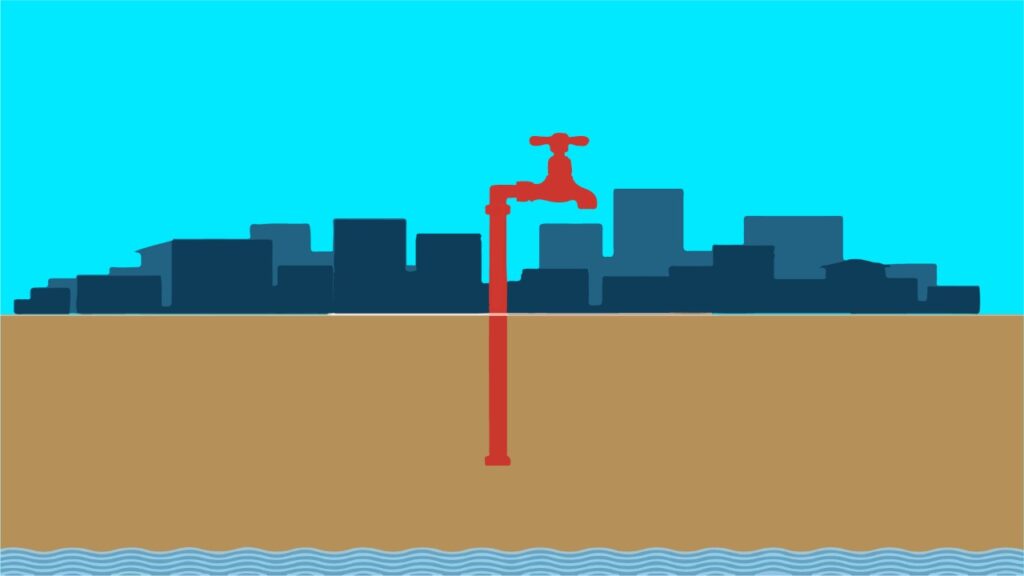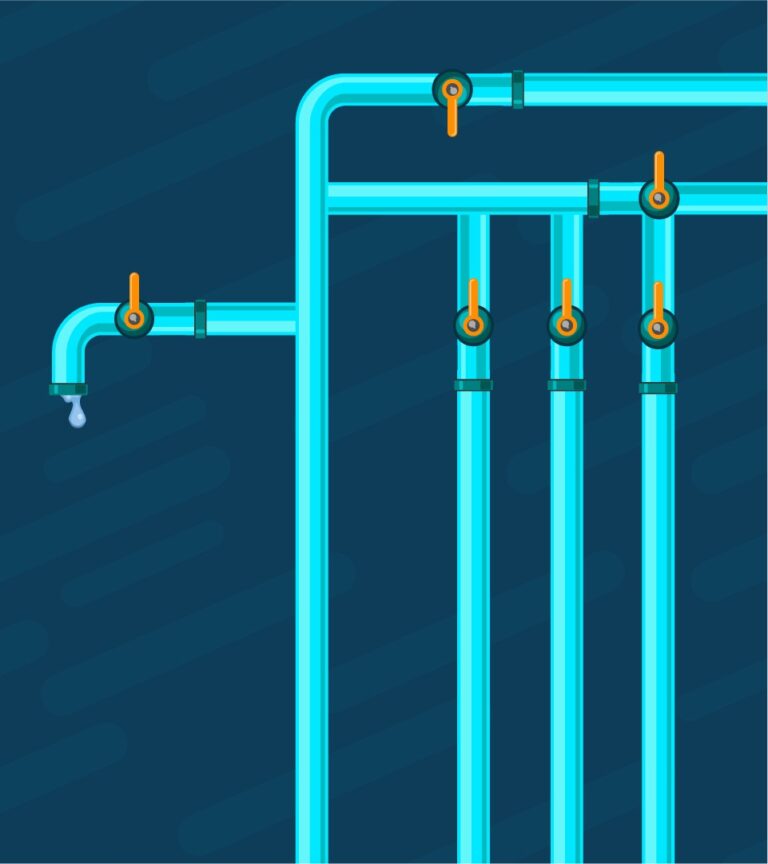Did you know?
Only 1 in every 5 households in India has piped drinking water connections, says the National Sample Survey Office’s (NSSO) 76th round. Even in Urban India, only 40.9 percent of households have piped water connections, water scarcity in rural India is a story for another time.
Another interesting fact, Andhra Pradesh (AP), Gujarat, Karnataka, Tamil Nadu (TN), and Uttar Pradesh (UP) top the charts among states that are reeling from groundwater exploitation. However, as per the report of a parliamentary committee released in 2018, in only these states, nearly 7426 licenses have been given to packaged drinking water plants.
The report also highlights that 2,552 m3 of groundwater is extracted each day in 18 blocks of ‘Semi-Critical’ areas in nine states. These states are Andhra Pradesh, Gujarat, Haryana, Karnataka, Maharashtra, Punjab, Tamil Nadu, Uttar Pradesh, and Uttarakhand.
Whereas, each block in ‘Critical’ areas of Chhattisgarh, Uttar Pradesh, and Uttarakhand has been permitted to withdraw only 825 m3 water/day.
The Nexus
We have read and heard enough about the water scarcity issues in cities as well as villages across the country. But have we stopped to think, where is all the water from the natural sources going? Well, to the mercy of the unholy nexus. You ask why we call it a nexus.
For better understanding, let us highlight the issues leading to shortage and erratic supply of water in metro cities,

Insufficient pipelines
We mentioned earlier, only 40.9 percent of the urban population enjoys the facility of piped water connections. What is the rest 50 percent supposed to do? There is an irony, Love is Life, also, Water is Life. Choosing between love and water, you know who wins. The 50 percent population cannot live with only love and no water.
Citizen groups have written to municipal corporations, state governments, and even central ministries. But the plea seems to fall on deaf ears. What remains, is the dependency on public taps and private water tankers.
Scarce Water Supply
Does the 50 percent population that is privileged enough to have the piped connection enjoy water haven? Sadly, no. They are posed with another level of the problem, inequitable and scarce water supply. The situation is such that either there is no water supply or the timings are inconvenient for people to make use of it. Water supply during the day time is of little use when most people are away from their homes. In other places, the supply is not even enough for a household to last through the day.
Yet again water is bought from private agencies through water tankers. Moreover, in spite of the exorbitant price the water supplied is not potable.
Wastage in Leaks
According to the National Sample Survey, nearly 40-50% of the water is lost in the distribution system. Talking of Mumbai alone, where households receive 2-5 hours water supply each day, nearly 275 of the water is lost as non-revenue supply. Over everything else, it strains the financial budget of the municipal corporation and further cripples the distribution infrastructure.
When distribution fails, exploitation of groundwater begins. And we are back to private suppliers abusing the water table for commercial and domestic use.
Water Contamination
Every year over 4,00,000 lakh children in India die of diarrhea, which is caused by contaminated water. Yes, those many little lives are the price for inadequate management of toxic industrial waste and household sewage systems. Policies for reclamation and recycling of sewage water are good to look at. But they hardly see the light of the day in the hands of indifferent municipal authorities. Instead, the responsibility is divested to builders and residential complex associations, who are not accountable to achieve the standards.
However, testing and purification before distribution are in the hands of the municipal boards. The sacrificed lives of children speak for the diligence followed in this regard.
Once again, the private water supply system that forms the lifeline for the urban population is also unregulated. Where pricing and delivery of water tankers are themselves questionable, purity of water is far below on the list of demands.
Unregulated Water Tanker Supply
Water tankers are the answer to the lack of a pipeline network and irregular and scarce water supply. However, when they are essential for the very basic need of the population, they must also be regulated. A structured, monitored, and fair system of supply is the need of the hour.
We all have seen commercial water supply borewells being dug in residential areas, where do they seek permission from. Where the groundwater is not sufficient for existing residents, private water supply companies dig borewells that are 1000s feet deeper than domestic ones. These borewells supply water through 100s of tankers that run across the city every day.
These tankers are priced at the whims and fancies of the suppliers. They create a demand and supply gap and then scale up the pricing. Even after paying a huge price, the water made available is not potable. There are no purification systems used, the tankers are not sanitized for hygiene even after months of regular use. And still, the business thrives.
All of this and more that you experience on a day to day basis, is nothing short of a nexus. You will agree. While the government and its representatives must take responsibility to check the system, it may be a really long process.
-
Wastage in Leaks
According to the National Sample Survey, nearly 40-50% of the water is lost in the distribution system. Talking of Mumbai alone, where households receive 2-5 hours water supply each day, nearly 275 of the water is lost as non-revenue supply. Over everything else, it strains the financial budget of the municipal corporation and further cripples the distribution infrastructure.

When distribution fails, exploitation of groundwater begins. And we are back to private suppliers abusing the water table for commercial and domestic use.
-
Water Contamination
Every year over 4,00,000 lakh children in India die of diarrhea, which is caused by contaminated water. Yes, those many little lives are the price for inadequate management of toxic industrial waste and household sewage systems. Policies for reclamation and recycling of sewage water are good to look at. But they hardly see the light of the day in the hands of indifferent municipal authorities. Instead, the responsibility is divested to builders and residential complex associations, who are not accountable to achieve the standards.
However, testing and purification before distribution are in the hands of the municipal boards. The sacrificed lives of children speak for the diligence followed in this regard.
Once again, the private water supply system that forms the lifeline for the urban population is also unregulated. Where pricing and delivery of water tankers are themselves questionable, purity of water is far below on the list of demands.
-
Unregulated Water Tanker Supply
Water tankers are the answer to the lack of a pipeline network and irregular and scarce water supply. However, when they are essential for the very basic need of the population, they must also be regulated. A structured, monitored, and fair system of supply is the need of the hour.
We all have seen commercial water supply borewells being dug in residential areas, where do they seek permission from. Where the groundwater is not sufficient for existing residents, private water supply companies dig borewells that are 1000s feet deeper than domestic ones. These borewells supply water through 100s of tankers that run across the city every day.
These tankers are priced at the whims and fancies of the suppliers. They create a demand and supply gap and then scale up the pricing. Even after paying a huge price, the water made available is not potable. There are no purification systems used, the tankers are not sanitized for hygiene even after months of regular use. And still, the business thrives.
All of this and more that you experience on a day to day basis, is nothing short of a nexus. You will agree. While the government and its representatives must take responsibility to check the system, it may be a really long process.
What can be done?
Water democracy is the need of the hour. Tankerwala is doing its bit to regulate the private water supply system through water tankers. It is an aggregator of water tankers that works for the welfare of both sides, the supplier and the consumer.
Water suppliers register on the Tankerwala portal to experience a smooth and well-managed demand-supply economy in their business. They can enjoy the benefits of servicing any and everyone in their area without having to rely on middlemen. They can also offer competitive pricing to bag orders and get paid fully by electronic systems instantly.
What’s in there for consumers is the never before convenience. They can order water tankers through the mobile application in just a few clicks. They can also track their orders through the app as the tankers are fitted with GPS devices. Another added advantage is the delivery pre-scheduling feature, which our customers just love. The tanker is delivered with an OTP and the payment can be made electronically through cards, internet banking, or e-wallets.
Tankerwala is indeed spoiling its customers with convenience.
Wat’er you waiting for?


